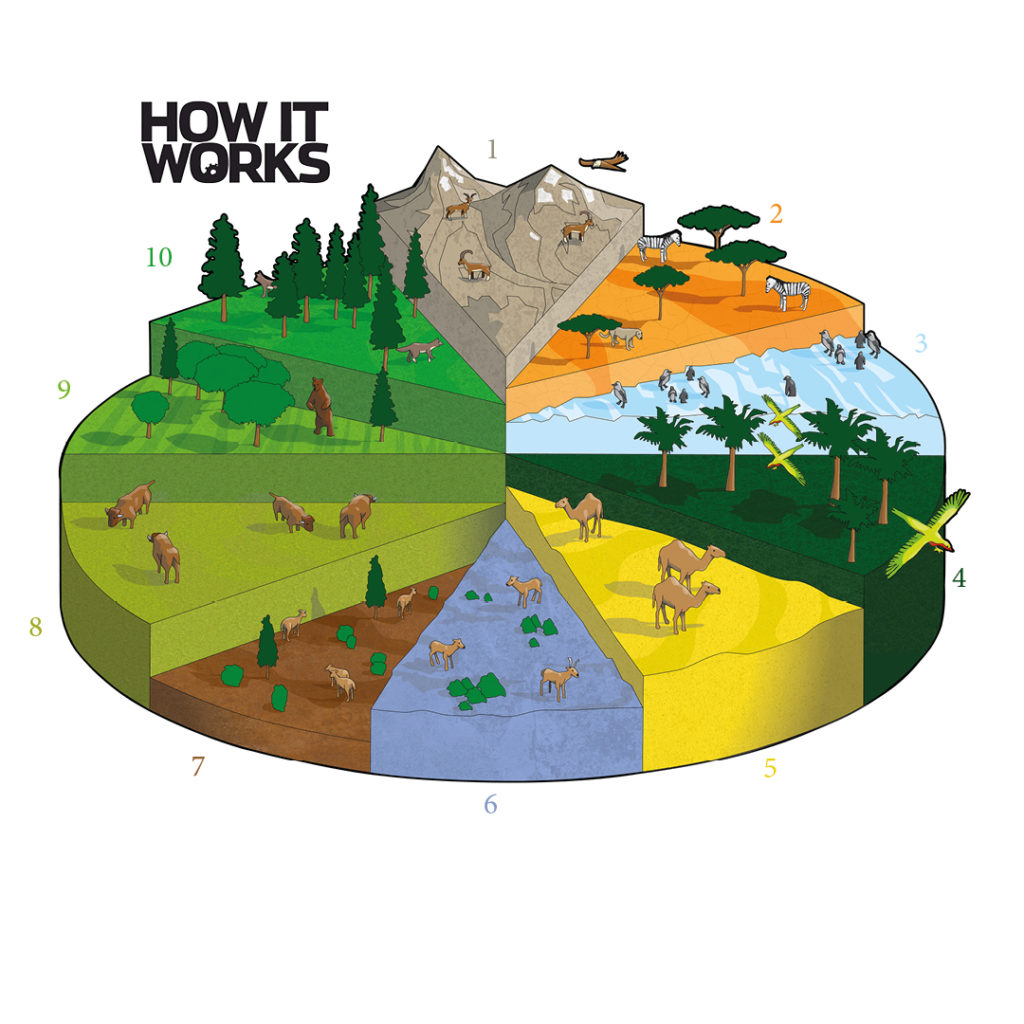British Science Week 2020: Our diverse planet
by Ailsa Harvey · 06/03/2020
Exploring this year's theme, discover how our planet’s incredible biomes differ
(Image credit: Future PLC)
1. Mountain
Rising above the surrounding landscape and found on all continents, mountains are unique in that they contain other land habitats within them.
A grassland might exist at the base of a mountain; you could find a coniferous forest in the centre; there may even be a tundra at the top.
2. Savanna
Comprised of tropical grasslands, the open landscape of a savanna is littered with shrubs and isolated trees. Despite having a wet and dry season, savannas have warm temperatures all year round. Perfect for herbivores, such as elephants and zebras, animal types vary depending on where in the world the savanna is.
3. Polar ice
Covered in ice for most of the year, the Arctic and Antarctica in the North and South Poles are the coldest regions on Earth. Marine animals populate the waters, while polar bears and penguins live on land, in the north and south respectively. The only plant life is algae.
4. Tropical rainforest
Home to more animal and plant life than any other habitat, tropical rainforests experience a constant hot temperature and high rainfall. Near to the equator and therefore exposed to plenty of sunlight, the humidity and dense vegetation provide a unique water and nutrient cycle.
5. Hot desert
Where rainfall is less than 25 centimetres per year, hot deserts are so dry that it’s difficult for plant life to grow. Reaching temperatures of up to 50 degrees Celsius during the day but turning very cold at night, there is a low level of biodiversity.
6. Tundra
Home to reindeer, tundras are dry, cold and windy. Covered in snow for most of the year, the harsh landscapes have extremely low temperatures, poor
nutrients, little precipitation and short growing seasons. The few plants and animals that live there are well adapted to the long, cold winters, though.
7. Mediterranean
Mediterranean habitats have hot and dry summers, but cool and moist winters. Experiencing low rainfall, but still more than in desert regions, many animals and plants have adapted to survive in these conditions. These ecosystems are teeming with insect species, and home to plants that have
adapted to conserve water
8. Temperate grassland
Lacking in trees and shrubs, the dry grasslands of Africa (veldts), North America (prairies), South America (pampas) and Eurasia (steppes) have nutrient-rich soils that are ideal for grazing animals. Although home to many animals, such as bison and antelope, there is little diversity in terms of wildlife.
9. Deciduous forest
Deciduous forests exist in areas that go through four distinct seasons, so wildlife adapt to survive in both warm summers and cold winters. For example, trees have thick bark to protect them from the cold. In autumn, the leaves change colour; they then fall from the trees in winter and grow back in spring.
10. Coniferous
Coniferous forests are found in temperate regions of the world, such as North America, Europe, Russia and Asia. They are made up mainly of evergreen cone trees like spruces, hemlocks, pines and firs, which thrive in short, cool summers and long, harsh winters.
This article was originally published in How It Works issue 94
For more science and technology articles, pick up the latest copy of How It Works from all good retailers or from our website now. If you have a tablet or smartphone, you can also download the digital version onto your iOS or Android device. To make sure you never miss an issue of How It Works magazine, subscribe today!





